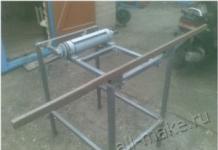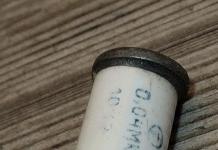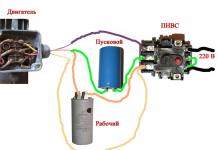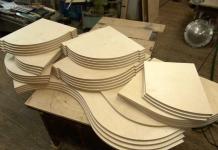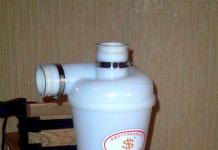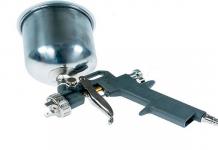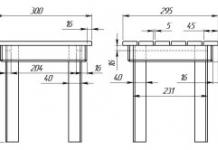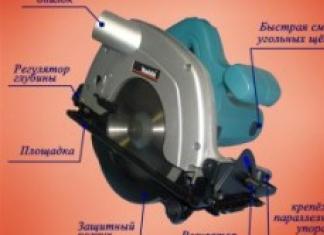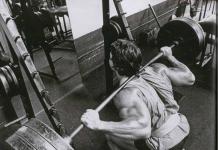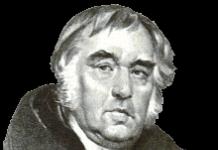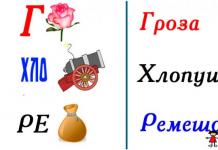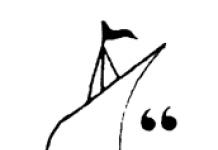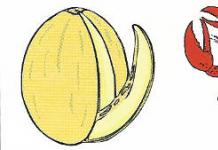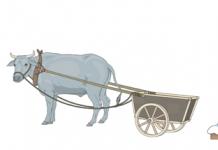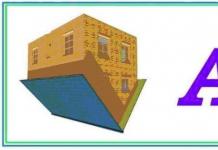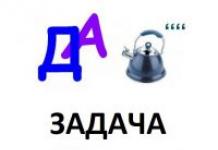APPROVE:
________________________
[Job title]
________________________
________________________
[Name of company]
________________/[FULL NAME.]/
"____" ____________ 20__
JOB DESCRIPTION
Roller 4th category
1. General Provisions
1.1. This job description defines and regulates the powers, functional and job duties, rights and responsibilities of the 4th category roller operator [Name of organization in the genitive case] (hereinafter referred to as the Company).
1.2. Roller of the 4th category is appointed to the position and dismissed from the position in accordance with the procedure established by the current labor legislation by order of the head of the Company.
1.3. Roller of the 4th category belongs to the category of workers and reports directly to [name of the position of the immediate supervisor in the dative case] of the Company.
1.4. Roller of the 4th category is responsible for:
- timely and high-quality performance of tasks for their intended purpose;
- compliance with performance and labor discipline;
- observance of labor safety measures, maintenance of order, compliance with fire safety rules at the work site (workplace) entrusted to him.
1.5. A person who has a secondary vocational education in this specialty and at least 1 year of work experience is appointed to the position of a roller operator of the 4th category.
1.6. In practice, a 4th category roller operator should be guided by:
- local acts and organizational and administrative documents of the Company;
- internal labor regulations;
- rules of labor protection and safety, ensuring industrial sanitation and fire protection;
- instructions, orders, decisions and instructions of the immediate supervisor;
- this job description.
1.7. Roller of the 4th category must know:
- device, kinematic diagrams and rules for setting up rollers, presses and cross-rolling machines;
- properties of sheet metal in the process of hot and cold rolling;
- technical conditions and state standards for rolling work;
- hot and cold bending and rolling techniques;
- arrangement of lifting mechanisms, control and measuring instruments;
- design of special devices;
- rules for disassembly, assembly, tool adjustment;
- metal heating modes.
1.8. During the period of temporary absence of the 4th category roller, his duties are assigned to [name of the position of the deputy].
2. Job responsibilities
Roller of the 4th category performs the following labor functions:
2.1. Rolling, straightening and bending of complex and large parts on various rolls and presses of various designs from sheet and bar metal with a thickness of over 20 to 30 mm in a cold state and over 30 to 40 mm in a hot state.
2.2. Rolling on machines for transverse rolling of parts made of bar metal with a thickness of over 30 millimeters in a hot state.
2.3. Cold rolling of high-carbon, special steel grades, precious and non-ferrous metals with increased accuracy.
2.4. Bending of tapered shells and half-shells made of sheet metal with a thickness of more than 10 millimeters in a cold state and more than 20 millimeters in a hot state.
2.5. Bending parts with three or more bends on bending machines.
2.6. Rolling of strips and shaped profiles from high-carbon and special steel grades on single and multi-stand mills.
2.7. Regulation of the metal heating mode for rolling.
2.8. Billeting of bottoms and necks of all types of cylinders.
2.9. Adjustment of rollers for various types of straightening, bending and rolling.
In case of official necessity, a 4th category roller operator may be involved in the performance of duties overtime, in the manner prescribed by law.
3. Rights
Roller of the 4th category has the right:
3.1. Get acquainted with the draft decisions of the management of the enterprise relating to its activities.
3.2. Submit proposals for the management to improve the work related to the responsibilities provided for in this job description.
3.3. Report to the immediate supervisor about all the shortcomings in the production activities of the enterprise (its structural divisions) identified in the course of the performance of their duties and make proposals for their elimination.
3.4. Request personally or on behalf of the immediate supervisor from the heads of enterprise departments and specialists information and documents necessary for the performance of their duties.
3.5. Involve specialists from all (individual) structural divisions of the Company in solving the tasks assigned to him (if it is provided for by the regulations on structural divisions, if not, with the permission of the head of the Company).
3.6. Require the management of the enterprise to assist in the performance of their duties and rights.
4. Responsibility and performance evaluation
4.1. Roller of the 4th category bears administrative, disciplinary and material (and in some cases provided for by the legislation of the Russian Federation - and criminal) responsibility for:
4.1.1. Non-fulfillment or improper fulfillment of official instructions of the immediate supervisor.
4.1.2. Failure to perform or improper performance of their labor functions and assigned tasks.
4.1.3. Unlawful use of the granted official powers, as well as their use for personal purposes.
4.1.4. Inaccurate information about the status of the work entrusted to him.
4.1.5. Failure to take measures to suppress the identified violations of safety regulations, fire and other rules that pose a threat to the activities of the enterprise and its employees.
4.1.6. Failure to enforce labor discipline.
4.2. Evaluation of the work of the roller of the 4th category is carried out:
4.2.1. The immediate supervisor - regularly, in the course of the daily implementation by the employee of his labor functions.
4.2.2. Attestation Commission of the enterprise - periodically, but at least once every two years based on the documented results of the work for the evaluation period.
4.3. The main criterion for evaluating the work of a 4th category roller is the quality, completeness and timeliness of his performance of the tasks provided for by this instruction.
5. Working conditions
5.1. The mode of operation of the 4th category roller is determined in accordance with the internal labor regulations established by the Company.
5.2. In connection with the production necessity, the 4th category roller is obliged to go on business trips (including local ones).
Acquainted with the instruction __________ / ____________ / "____" _______ 20__
Metallurgy today is an important and actively developing industry, which is experiencing a stable shortage of qualified workers. One of these specialties is the rolling mill.
Description of the profession
A roller is a worker who knows how to work on a special tool for deforming sheet material. This procedure is called rolling, as is the apparatus itself, with which it is carried out. It was from them that the name of the profession came.
In production, the main task of the roller is to monitor the equipment, which must always be in working condition, as well as to carry out procedures for the deformation of materials. At the same time, he must monitor the progress of the operation, if necessary, make adjustments to the operation of the equipment. Otherwise, he will not be able to ensure that the product obtained at the output corresponds to the specified parameters.
Since the roller is responsible for the performance of the tool entrusted to him, his responsibilities also include preparing the equipment and adjusting it before use, inspecting the tool, carrying out basic repair work, and replacing parts that have become unusable. If there are technical problems that the specialist himself cannot either eliminate or determine, he must inform the higher management about the problems that have arisen.
In addition, a qualified roller must be able to take readings from instruments and conduct initial quality control of the created product in order to filter out defects.
Where can you learn to become a roller maker?
There are two ways to get this specialty - to enter a vocational school and learn directly at work.
Traditionally, training includes practical and theoretical parts, in the process of mastering which the student not only learns about the types of rolling, the features of working with them, but also gets acquainted with safety precautions at work, the intricacies of the work process. And thanks to the practice at the enterprise, he has the opportunity to see what varieties of the profession there are in order to decide in which particular segment to work in the future.
When mastering a profession in production, there is no opportunity to get acquainted with different options, because the employer decides for himself which specialist he needs. In addition, even if the profession was obtained without an educational institution, the worker may still need to take advanced training courses. It is quite possible that new-style tools will be purchased for production, with which none of the working specialists is fully unfamiliar. Therefore, with any method of mastering this specialty, sooner or later there will be a need to obtain a theoretical base in an educational institution.
In addition, for active development in one's profession and great opportunities for career growth, it is more profitable to receive a special education at the beginning of one's career. We must not forget that in order to obtain an administrative position, you will also need a specialized education. Therefore, today there are special courses at the training centers.
Roller ranks
To date, there are 4 categories in the profession of a roller. Their peculiarity is that the lowest rank is the second, the highest is the fifth:
2nd category– skills of rolling metal parts up to 10 mm thick in cold and up to 20 mm in hot condition;
3rd category– be able to bend edges manually, work with cold metal from 10 to 20 millimeters and hot metal from 20 to 30 millimeters;
4th category- be able to adjust and repair the entrusted tool, also 10 millimeters are added to the thickness of the metal;
5th category- know the device and features of all tools, the quality standards that apply to the finished product.
Individual qualities of the roller
Like many working specialties, the profession of a roller operator requires not only special skills and knowledge, but also a number of individual qualities: the ability to calibrate one’s actions, accuracy and discretion, quick response to an emergency situation, attention to detail, scrupulousness, spatial thinking, the ability to concentrate on work and quickly switch their attention, composure.
In addition, there are also physical requirements for candidates. For example, since we are talking about hard physical labor in dangerous conditions, we need: endurance, sharp eyesight, good coordination and fine motor skills.
Thus, it is strictly forbidden to work in production if there are the following medical contraindications: hearing loss or vision loss, problems with the vestibular apparatus, neuroses, diseases of the cardiovascular system, respiratory organs, stomach, and chronic skin diseases.
Roller salary level
On the territory of Russia, the level of the average monthly income of a roller operator varies greatly: from 17,000 to 60,000 rubles.
The highest salary is received by specialists from the Republic of Altai, the average salary of a qualified specialist is 60,000 rubles. At the same time, the largest number of vacancies is open in the Irkutsk region, where the average salary is 15,000 rubles.
It is also worth noting that in many respects the salary of a specialist is affected by the level of his qualifications, work experience and skills. The higher these figures, the higher the salary will be.
Pros and cons of the profession of a roller
Positive sides professions roller:
Opportunity for on-the-job training;
Demand for the specialty;
Stable work;
Right to early retirement.
To negative points worth considering:
Heavy physical labor;
Serious medical restrictions;
Harmful and dangerous working conditions for health;
A small level of income;
Only men over the age of 18 are hired.
Maintenance of equipment designed to perform such a technological procedure as plastic deformation of metal in a cold and hot state should be carried out by a specialist - a rolling mill. Professional training of roller operators is carried out by special educational institutions.
Main functions
As mentioned above, a roller is a person who, operating specialized equipment, controls the process of hot or cold deformation of a metal workpiece. Carrying out such control and promptly making adjustments to the operating modes of the device, the roller monitors compliance with the geometric parameters of the product formed from the workpiece.
In addition, the functions of the roller, which is part of the locksmith and repair team, include preparing the equipment for work, repairing it, replacing worn parts and performing pre-commissioning adjustments. With the relevant knowledge and skills acquired during the training process, a rolling specialist must skillfully operate lifting mechanisms, take readings from control devices, carry out initial quality control of the finished product, and strictly control the sequence of stages of the technological process.
Individual qualities
In order to effectively and without harm to one's own health to cope with such a technological operation as rolling, the specialist who performs it must have a number of individual qualities, which include:
- caution;
- accuracy;
- physical endurance;
- the ability to make decisions quickly;
- mental balance;
- attention to detail;
- spatial thinking;
- good vision;
- acute hearing;
- developed eye;
- quick response - the ability to quickly respond to emergency situations;
- good visual-motor coordination;
- the ability to concentrate attention and quickly switch it, if necessary;
- ability to visual-figurative and practical thinking.

Medical contraindications
Since the roller works in a production environment and manages rather complex metalworking equipment, there are a number of medical contraindications that do not allow one to engage in such activities. Such contraindications include, in particular:
- active tuberculosis;
- persistent hearing loss observed even in one ear;
- violations of the functions of the vestibular apparatus;
- CNS disorders and neuroses;
- diseases of the stomach and cardiovascular system;
- diseases of the organs of vision - a decrease in sharpness, a violation of color reproduction, astigmatism;
- the presence of chronic skin diseases.
Professional training
Passing vocational training at an educational institution, the roller operator gains knowledge in the following areas:
- theoretical foundations of rolled metal and the rules for performing roll calibration;
- design features of rolling equipment and the principle of its operation;
- device and principle of operation of lifting mechanisms, instrumentation, electric motors;
- rules for the organization of the technological process in the processing of metals by pressure.
In addition to specialized disciplines, rollers are given additional knowledge in such subjects as physics, chemistry and electrical engineering.
Unified Tariff and Qualification Directory of Works and Professions of Workers (ETKS), 2019
Part No. 1 of issue No. 2 ETKS
The issue is approved by the Decree of the Ministry of Labor of the Russian Federation of November 15, 1999 N 45
(as amended by the Order of the Ministry of Health and Social Development of the Russian Federation of November 13, 2008 N 645)
Roller
§ 5. Roller of the 2nd category
Job Description. Rolling, straightening and bending on various rollers and presses of parts made of sheet and bar metal with a thickness of up to 10 mm in a cold state and up to 20 mm in a hot state. Rolling of edges with the subsequent editing on a ruler and a template. Bending and rolling of corners with a small radius of curvature, bending with the help of spacers and straightening on rollers of large sheet and bar metal in cold and hot condition with a given configuration. Dispersal of wire from non-ferrous metal into a tape. Rolling, straightening and bending on various rolls of parts made of sheet and bar metal with a thickness of over 10 to 20 mm in the cold and over 20 to 30 mm in the hot state under the guidance of a more highly qualified roller. Roller adjustment. Control of presses and rollers in the process of rolling, straightening and bending from local and remote control panels. Performing slinging work, giving signals to the crane operator (crane operator) and monitoring the load during lifting, moving and stacking it within the workplace.
Must know: device and principle of operation of the same type of rollers and presses; methods of work and sequence of operations during rolling and bending; method of fastening parts when processing them in rollers and on presses; metal deformation during rolling and bending in cold and hot condition; allowances for cold and hot rolling; arrangement of special devices and tools; the degree of heating of metals for hot rolling; slinging rules.
Work examples
1. Chain links - rolling.
2. Rings made of strip, square or angle steel - bending with manual finishing.
3. Sheets for shells - bending on rollers with edging for welding.
4. Sheets of smoke chambers - bending on rollers.
5. Cylindrical shells made of sheet metal with a diameter of up to 1500 mm - rolling.
6. Branch pipes conical - rolling.
7. Pipelines and chimneys - rolling and straightening.
§ 6. Roller of the 3rd category
Job Description. Rolling, straightening and bending on various rollers and presses of parts from bar and sheet metal with a thickness of over 10 to 20 mm in a cold state and over 20 to 30 mm in a hot state. Edge bending on rollers, presses and manually. Bending of tapered shells and half-shells made of sheet metal up to 10 mm thick cold and up to 20 mm hot. Bending of parts with one or two bends - on bending machines. Editing edges on presses and manually, editing the shell according to templates and a ruler. Rolling and calibration of non-ferrous metal strip. Rolling on machines for transverse rolling of parts made of bar metal up to 30 mm thick in a hot state. Rolling, straightening and bending on various rolls of parts made of sheet and bar metal with a thickness of over 20 to 30 mm in the cold and over 30 to 40 mm in the hot state under the guidance of a more highly qualified roller. Adjustment of rollers. Participation in the repair of equipment.
Must know: device, principle of operation and rules for adjusting rollers and presses of various types, methods for adjusting rollers depending on the thickness of sheet metal, bending radius and steel grade; methods for measuring parts in the process of bending or rolling; purpose and conditions for the use of control and measuring instruments; mechanical properties of metals that affect the deformation of the metal during rolling and bending; design of various dies, devices and linings for bending and rolling.
Work examples
1. Welded drums - hot and cold straightening and rolling.
2. Blanks of cases and semi-cases of utensils - rolling and bending in a package.
3. Ripper tooth - rolling for stamping.
4. Metal products - rolling and bending of hulls and semi-hulls in a package.
5. Cones - rolling of reamers.
6. Cylindrical shells made of sheet metal with a diameter of more than 1500 to 3000 mm - rolling.
7. Pipes for metal structures conical with large angles - bending.
8. Lanterns, straighteners, radiators, housings and brackets - rolling, bending.
9. Cylinders made of sheet metal of large thicknesses - straightening and rolling in hot and cold condition.
§ 7. Roller of the 4th category
Job Description. Rolling, straightening and bending of complex and large parts on various rolls and presses of various designs from sheet and bar metal with a thickness of over 20 to 30 mm in a cold state and over 30 to 40 mm in a hot state. Rolling on machines for transverse rolling of parts made of bar metal with a thickness of more than 30 mm in a hot state. Cold rolling of high-carbon, special steel grades, precious and non-ferrous metals with increased accuracy. Bending of tapered shells and half-shells from sheet metal with a thickness of over 10 mm in a cold state and over 20 mm in a hot state. Bending parts with three or more bends on bending machines. Rolling of strips and shaped profiles from high-carbon and special steel grades on single and multi-stand mills. Regulation of the metal heating mode for rolling. Billeting of bottoms and necks of all types of cylinders. Adjustment of rollers for various types of straightening, bending and rolling.
Must know: device, kinematic diagrams and rules for setting up rollers, presses and cross-rolling machines; properties of sheet metal in the process of hot and cold rolling; technical conditions and state standards for rolling work; hot and cold bending and rolling techniques; arrangement of lifting mechanisms, control and measuring instruments; design of special devices; rules for disassembly, assembly, tool adjustment; metal heating modes.
Work examples
1. Crankshafts - bending.
2. Rings made of steel profiles - edgewise bending in rollers.
3. Metal tapes for capsule products - precise billeting.
4. Sheets for external cladding and metal structures - bending.
5. Cylindrical shells with a diameter of more than 3000 mm - rolling from sheet metal.
6. Tapered adapter pipes - bending according to the template.
§ 8. Roller of the 5th category
Job Description. Rolling, straightening and bending of complex and large parts on various rolls and presses of various designs from sheet and bar metal with a thickness of over 30 mm in a cold state and over 40 mm in a hot state. Bending complex parts on frames, layouts and models. Dispersal of flattened strips in a cold state from alloyed steels and alloys on multi-stand mills. Setting up mills Adjustment and adjustment of rolls and rollers for rolling different sizes of strips.
Must know: device, kinematic diagrams and rules for setting up serviced equipment; design features of unique and special devices; rules for setting up and adjusting control and measuring instruments and devices; ways to achieve the specified accuracy; chemical composition of rolled steels and alloys; requirements for manufactured products.
Work examples
Frame bending:
1. Details of fairings.
2. Stern sheets.
3. Perforated sheets.
Explain more clearly, please, who is a roller. and got the best answer
Answer from Leka[guru]
Someone who is specially trained to work on this machine:
There are also rollers for plastics and rubbers.
Answer from Airat Sattarov[guru]
A worker on rollers - a machine for mixing, crushing, grinding something. They are used in the production of rubber, in the flour-grinding industry, in the food industry and in many other places...
Answer from Maxim Pinchuk[active]
The one who does it:
Rolling (rolling) is a technological operation of deformation of sheet material (for example, tin) along a certain direction or radial deformation of a pipe. Often, especially on an industrial scale, rolling of sheets is carried out in forging rolls, and pipes - using a special tool - rolling, from where the name of this operation comes from. Any ductile metals, rubber compounds, plastics are processed. With the help of rolling, finished parts, precise blanks for stamping, etc. are obtained.
Rolling - a tool designed for radial deformation of the pipe in the hole of the tube sheet (collector) of the heat exchanger in order to create a tightly sealed connection. The technological process of fixing pipes using flaring is called flaring. Depending on the design features of heat exchangers and pipe sizes, various types of rolling are used. So, for pipes of small diameter (up to Din. less than 12 mm), rolling of the "T", "ST" and "RT" series are used, for pipes with an inner diameter of 12 to 40 mm, rolling of the "P" and "CP" series are used ( depending on the depth of rolling). For flaring boiler pipes, flaring series "K" (fixing) and series "KO" (fixing and collaring) are used. When fixing extra-thin-walled pipes (for example, 28x0.5 mm), five-roller rolling of the "5R" series is used. As a rolling drive, reversible rolling machines (pneumatic and electric) with automatic torque control are used. The control of the flaring process is carried out according to the formula: Din. after flaring = D int. before flaring + diametrical clearance between the pipe and the tube sheet opening + 10% of the pipe wall thickness. The main technical characteristics of the flare are: 1. The flare range, i.e. the range from the minimum inner diameter of the pipe into which the flare can be inserted to the maximum inner diameter of the pipe by which it can be radially deformed. 2. Expanding depth, i.e., the length of the linear section of the pipe, to which this expansion can be used to radially deform the pipe. In this case, there are flaring both with a fixed flare length and with an adjustable one. The most important quality parameter of flaring is its durability. Roll life is determined by the number of pipe ends of a particular size and material that can be secured in one roll before changing spindles and rollers.


